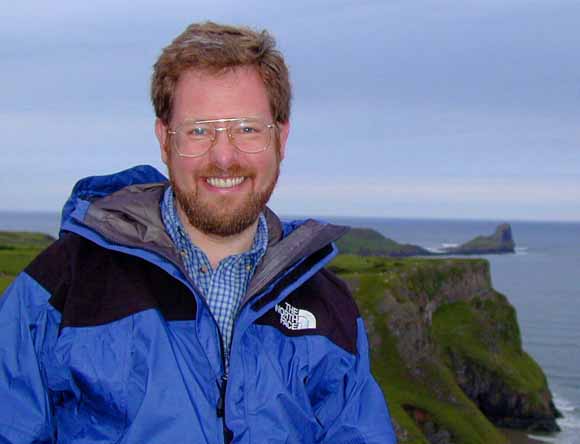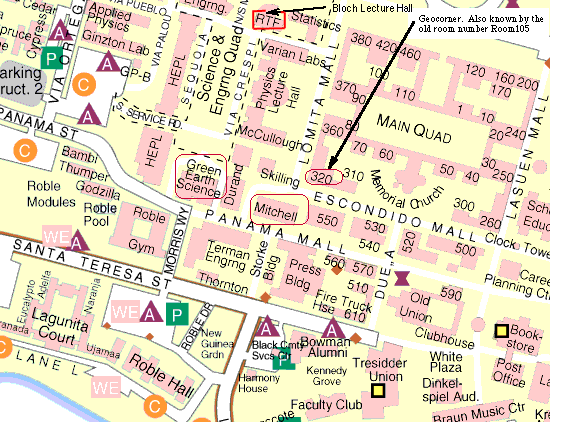
Location: Stanford University
This will be the 410th meeting since 1954

The Main Ethiopian Rift is a classic narrow rift that developed in hot, weak lithosphere, not in the initially cold, thick, and strong lithosphere that would be predicted by common models of rift mode formation. Our seismic velocity profiles across the MER and the Ethiopian Plateau indicate that hot lower-crust and upper-mantle are present throughout the broad region affected by Oligocene flood basalt volcanism, including both the present rift and the adjacent Ethiopian Plateau hundreds of kilometers from the rift valley. Our results lead to a hybrid rift-mode, in which the brittle upper-crust has developed as a narrow rift along the Neoproterozoic suture between East and West Gondwana, while at depth lithospheric deformation is distributed over the broad region (~400 km wide) thermally perturbed by the broad thermal upwelling associated with the Afar plume head. Development of both the East African Rift System to the south (in cold, strong lithosphere) and the MER to the north (in hot, weak lithosphere) as narrow rifts, despite their vastly different initial thermal states and depth integrated lithospheric strength, indicates that common models of rift mode formation that focus only on temperature, thickness, and vertical strength profiles do not apply to these classic continental rifts. Instead, inherited structure and associated lithospheric weaknesses are the primary control on the mode of extension. http://geo.stanford.edu/research/groups/crustal/research.php?rg_id=6&rgpr_id=11

Simon Klemperer
Simon Klemperer is Professor of Geophysics at Stanford University. He uses (mostly) seismic methods to image lithospheric structure, and to understand the growth, composition and tectonic evolution of continental crust. His research emphasises acquisition of new datasets to explore "natural laboratories": key regions of earth that exemplify important active proceses. His recent research on extensional tectonics has focussed on the East African Rift, and the Basin-and-Range province of western North America. Other recent foci have been compressional tectonics of Tibet and the Himalaya; and continental growth above the intra-oceanic Mariana subduction zone. Klemperer earned his Ph.D. in the COCORP project (Consortium for Continental Reflection Profiling) at Cornell University before returning to his undergraduate institution, Cambridge University, as a Royal Society Research Fellow at BIRPS (British Institutions' Reflection Profiling Syndicate), for which work he received the President's Award of the Geological Society of London. At Stanford since 1990 as leader of the Crustal Geophysics group, Klemperer was the 2008 winner of the Allan V. Cox Medal for fostering undergraduate research. http://geo.stanford.edu/research/groups/crustal/
Reservations: The preferred way to make reservations is simply to email John Spritzer at jspritzer@usgs.gov by Nov. 27, tell him you will attend, commit to pay, and bring your payment to the meeting. John always emails a confirmation; if you don’t get one, assume email crashed yet again and email him a second time. A check made to “PGS” is preferred, payable at the meeting.
If you want to pay in advance:
Everyone (including Stanford folks now) Please make dinner reservations by Nov. 27. Contact John Spritzer, at U.S. Geological Survey, 345 Middlefield Road, MS-973 Menlo Park, CA 94025, Tel.: (650) 329-4833. Send check made out to “PGS” to John.
Dinner is $35.00. Includes wine (5:30 to 6:15 PM.) and dinner (6:15-7:30 PM.).
For students from all universities and colleges, the dinner, including the social 3/4-hour, is $8.00 and is partially subsidized thanks to the School of Earth Sciences, Stanford University (Note, no-show reservations owe the full price).
Doris, whose wonderful crew prepares our meals, asked that we let you know that people who are late RSVPing and people who show up without a reservation will be welcome but that they will be eating on paper plates with plastic utensils (food supply permitting).
Dues for Academic Year 2009-2010 ($10.00) should be sent to John Spritzer, U.S. Geological Survey, 345 Middlefield Road, MS-973 _Menlo Park, CA 94025. John’s phone: (650) 329-4833.
Officers: Vicki Langenheim, President; Jon Hagstrum, Vice President; Mike Diggles, Secretary; John Spritzer, Treasurer; Elizabeth Miller, PGS Stanford University Coordinator

Date created: September 9, 2009
Last modified: November 19, 2009
Created by: Mike Diggles, Webmaster-Secretary, PGS.